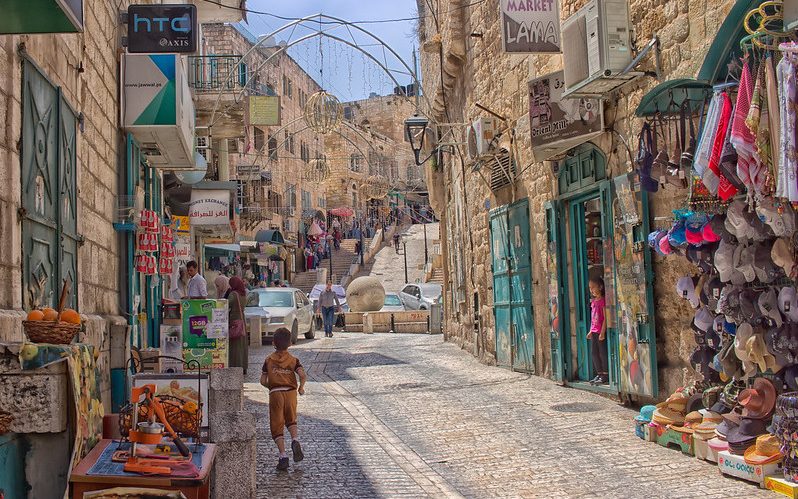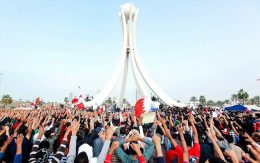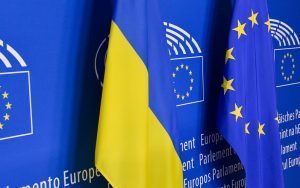This analysis is the third article of a six-part series on the Eastern Mediterranean, which provides an overview of the Arab Uprising that took place in the region in 2010/11, in order to establish an understanding of the current events unfolding in the region. The other parts of this series deal with the historical background, the socio-economic challenges, the Syrian Civil War, the Israeli-Palestinian conflict from 2000-2020, and the “problematic” triangle: Turkey, Cyprus, Greece.
While the entrance of the 21st century signalized a shift from a preexisting unpredictability to a new period of stability for the rest of the international system, a similar development did not occur in the Eastern Mediterranean. As Florence Gaub perfectly summarizes, “[the] Eastern Mediterranean is currently at the epicentre of regional upheaval; the last five years have unfolded in the most unpredictable manner, which raises concerns about the five years to come” (ELIAMEP, 2016: 21). Over the last decades, the region has been the stage of large-scale phenomena accompanied by high political unrest, degradation of socio-economic conditions, and the rise of violence. These shifts have created new security threats, proxy wars, and domestic conflicts that have challenged not only the regional authorities but also the international community. Furthermore, the previously existing “status quo” among the states has been disrupted either by expansionist policies of some political leaders and regional conflicts, or the influence of third states and superpowers. However, what renders the situation in the region especially volatile is the interaction and the deep historical roots of the majority of the regional issues. The combination of these factors constitutes their resolution particularly difficult, hence contributing negatively to their persistence and intensification.
After the presentation of the historical background of the Eastern Mediterranean states, the forthcoming parts aim to present the issues and events that have determined the development of the region in the last twenty years. Contrary to the first part, the analyses of the following articles do not focus on the states, but instead, attempt to shed a light on the present numerous, and complicated issues that the region is confronted with. The rationale behind this decision is that contemporary matters and challenges have transcended the national borders, thus rendering a state-centric study limited and narrow. For this reason, the following articles in this series briefly examine a) the socio-economic background evolution of the region, b) the 2010/11 Arab Spring; c) the ongoing Syrian Civil War; d) the Israel-Palestine conflict in the last twenty years; e) the competition of Cyprus and Greece with Turkey. While these are not the only issues the Eastern Mediterranean states are currently facing, they provide a good understanding of the current problems in the region and starting points for further research. This present analysis will discuss the Arab Uprising that the region experienced in 2010/11.
The Arab Uprising
From December 2010 onwards, a series of unprecedented anti-government protests, uprisings, and armed rebellions swept the region of the Middle East. While it all began as a mere protest by a humiliated vendor in Tunisia who set himself on fire, it soon became a popular revolt that “like wildfire and engulfed the entire Arab world” (Kamaraswamy, 2011). A few months later, protests also started in Egypt against the Mubarak government, and then in Syria, Libya, Yemen, Morocco, Iraq, Iranian Khuzestan, Lebanon, Jordan, Kuwait, and Sudan. At the same time, minor protests took place in Djibouti, Mauritania, Palestine, Saudi Arabia, and Moroccan-occupied Western Sahara. All over North Africa and the Middle East, the citizens took the streets to protest the oppressive regimes of their state (Reuters, 2011) and to demand changes. With a slogan “ash-shaʻb yurīd isqāṭ an-niẓām (“the people want to bring down the regime”), people expressed their opposition to the government’s authoritarian practices (suppression of human rights and unequal distribution of wealth) and economic mismanagement (clientelism, corruption, and human exploitation), and the low living standards existing in all these states (Uriel, 2011). Apart from that, the lack of political and esoteric legitimacy that governments “enjoyed” combined with their illegal holding onto authority (for example, Ben Ali was in power since 1987, Qaddafi in Libya from 1969, Bassar al Assad from 2000, and the list goes on) contributed negatively to the already “explosive” mix (Ghanem, 2016). Therefore, it is no wonder that what started as a mere call for freedom has eventually resulted in dramatic shifts and consequences that “sealed” the fate of the region for the decade (or even decades) to come.
Within the context of the Eastern Mediterranean, Egypt was the second country to be hit by the uprisings and is a very interesting case study of the Tunisian Jasmine Revolution’s implications. A week after Tunisia, Hosni Mubarak (who was in power for 30 years) was confronted with a wave of protests and had to yield his authority 18 days later. Whereas the international community was initially shocked by the brutality of the protests, it soon became apparent that it was the result of the longstanding refusal of the government to either reform the governance or find solutions to the social and economic problems, such as unemployment (Bossi, 2014). Following Mubarak’s resignation, the Egyptian military forces (that play a crucial role in the state’s politics and history) accepted the responsibility of managing the state until the upcoming election. On 24th June 2012, Egypt’s election commission announced that Muslim Brotherhood candidate Mohamed Morsi has won Egypt’s presidential runoff in a surprising turn of events.
Yet, the outcome of the election should be interpreted as a reaction against the corruption and failures of the previous political governance (Tadros, 2012). Considering the suppression of the Muslim Brotherhood by the Egyptian government and the dissatisfaction with the preexisting governance, the election of the latter is an attempt of the Egyptian people to turn to political Islam for change (Friedman, 2012). Nonetheless, Morsi did not last long in power as a dispute with the military over the proposal for increased authorities to Muslim Brotherhoods led to a military overturn of the government in 2013. Contrary to its predecessor, the new authorities outlawed the Muslim Brotherhood, then started drafting a new constitution and curbing media freedom. In May 2014, army chief Abdel Fattah Al-Sisi won the presidency. Whilst this “coup” validated the internal perception and fears concerning the role of the military in the governance and politics of Egypt, the period of stability that followed has hindered any attempts for further protests (Al-Anani, 2015). The decision to convict a thousand members of the Muslim Brotherhood to death is still shocking today, but the dilemma between freedom and stability (so characteristic of the countries of the region) has dominated the progress of Egypt in the last years (Fouad, 2014). Still, there are social or even religious movements operating in Egypt and calling for more freedoms.
Apart from Egypt, political instability also spread to its neighbouring state, Jordan. Like Egypt, the state experienced similar domestic socio-economic issues and longstanding authority, while the strong presence of the Muslim Brotherhood “paved the path” for the repetition of a comparable undertaking within the Jordanian context (Al-Shariff, 2014). However, compared to Egypt, despite the emergence of protests, King Abdullah managed to take advantage of its strategic position to halt the effects of Arab Spring by receiving external help from the US and the other Gulf states that helped stabilize the internal situation (Barany, 2012). Specifically, as the US has traditionally enjoyed close ties with Jordan, it encouraged Jordan to ask the International Monetary Fund to help tackle its domestic issues, so as to preserve both the state’s stability and the US bilateral interests (Ryan, 2018). As far as the Gulf monarchies are concerned, they backed King Abdullah to hinder the “expansion” of the waves of protests by offering him a position in the Gulf Cooperation Council (Jones, 2012).
Like Jordan, Lebanon also experienced numerous protests, but they did not have the same impact due to the state’s fears of another civil war. As Lana Asfour (2012) perfectly describes it, “the Arab spring brings back memories of the 2005 Cedar Revolution”, when following the assassination of the former prime minister Rafiq Hariri, a quarter of the Lebanese population took to the streets to demand an investigation into his death, with Syria as the main suspect (Fakhoury, 2014). Yet, the catastrophic dimensions of the previous incident proved to be enough to prevent the reiteration of a similar undertaking five years later.
The other states of the Eastern Mediterranean experienced mostly the downstream consequences of the Arab Spring. For Israel, the Arab Spring coincided with the reinvigoration of both political Islam and Arab nationalism. The ascend of the Muslim Brotherhood in Egypt sparked memories of past trauma, such as the 1948, 1956, 1967, 1969-1970, and 1973 conflicts, as well as fears of future clashes. The Netanyahu government thus perceived the regional developments as a catalyst that could disrupt the existing status quo with catastrophic consequences for Israel (Inbar, 2012). This rationale justifies Israel’s negative reaction towards the US support of the regime change in Egypt. When it comes to Palestinians, they were reluctant to embark on another intifada due to the “bleak” promises for ending the Israeli occupation or achieving significant improvements in their day to day lives (Miller, 2019).
At odds with the previous two “states”, Turkey utilized the Arab Spring to promote its regional interests, its image as a democratizing power, and the “Turkish model” in the greater Middle East (Aturk, 2016). Having experienced democratic progress and economic growth in the first decade of the 2000s, Turkey considered that Arab Spring as a chance to project its newly found democratic identity and become the leading advocate of democracy across the Middle East. However, despite the ambitious intention and plans, Turkey failed to achieve its goals. Furthermore, being faced with two important internal security threats, such as the PKK’s offensive starting in July 2015 and the Gülenist coup attempt in July 2016, Turkey’s behaviour resembled Neo-Ottomanism. Apart from that, the waves of migrants that came arriving from Libya and Syria did not only affect Turkey but also became the main security and humanitarian issue for Greece, Cyprus, and even the EU.
Based on this overview of the Arab Uprising in the Eastern Mediterranean, the forthcoming fourth part of this series will provide an analysis of the Syrian Civil War.









Be First to Comment